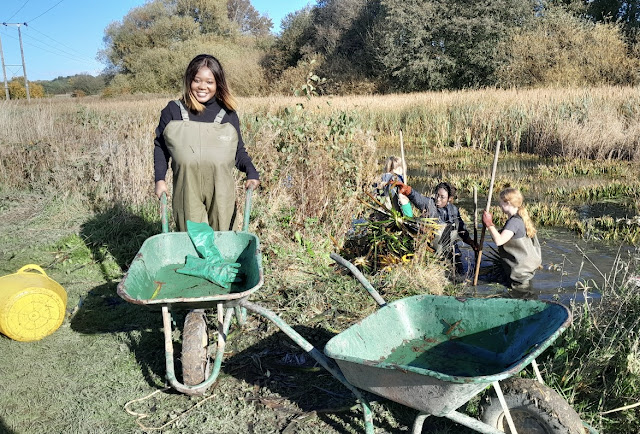Field Report: Tree Aftercare and Site Assessment with TCV Tang Hall —
From Roots to Results: A Summer Day of Learning, Caring, and Connecting with Nature
By Sofonie Dala
August 10, 2025
On a sunlit Sunday, August 10, I had the privilege of joining the dedicated team from The Conservation Volunteers (TCV) Tang Hall for a full-day field activity across the Allerthorpe, Everingham and Pocklington regions. The day’s itinerary spanned 7 hours and was centered on reforestation aftercare, an often overlooked yet crucial phase in any ecological restoration effort.
🌱 Tree Aftercare: A Vital Step in Reforestation
We visited multiple tree-planting sites established during the winter of 2023–2024. These sites had initially been planted as part of local and national efforts to restore native woodlands, improve biodiversity, and sequester atmospheric carbon dioxide in response to climate change.
Evaluating the Impact of Reforestation Through Field-Based Tree Aftercare and Ecological Monitoring
The primary objective was to assess tree health and survival rates—key indicators of project success. At each site, we carried out:
Survival Rate Monitoring: Counting and documenting the proportion of surviving saplings, which ranged widely. Some zones showed an impressive 85–90% survival rate, while in Everingham trees had severe losses, with as little as 40% of trees remaining.
Tree Guard Maintenance: Many saplings had protective tree guards damaged by wildlife, weather, or accidental human activity. We repaired or replaced these guards, which are essential to protect young trees from grazing animals, rodents, reptiles and other insects.
Growth Observation: We noted significant variation in growth. Some saplings were thriving, with healthy foliage and even early fruit production—a positive sign of adaptation and ecological integration. Others showed signs of stress: yellowing leaves, stunted growth, or pest damage.
These observations reflect the broader ecological principle that reforestation is not just about planting trees—it’s about nurturing ecosystems. Factors like soil quality, microclimate, species selection, and community engagement all determine the long-term success of such projects.
Scientific and Ecological Insights
Tree aftercare directly supports Sustainable Development Goal (SDG) 15: Life on Land, by ensuring that restoration efforts contribute to resilient terrestrial ecosystems. Additionally:
Climate Regulation (SDG 13): Healthy, growing trees serve as carbon sinks, helping to mitigate climate change by capturing and storing carbon dioxide.
Urban and Rural Resilience (SDG 11): Tree planting supports sustainable cities and communities, improving air quality, reducing urban heat, and creating natural spaces for mental and physical well-being.
The survival and establishment of young trees are often influenced by local biodiversity. Native insects, fungi (especially mycorrhizal networks), and bird species play symbiotic roles in forest establishment. Our site visits underlined the importance of monitoring post-planting interactions and adapting care techniques based on local ecological feedback.
Closing Moments and Reflections
The fieldwork concluded with a relaxing stop at a charming café near the historic Barbly Hall Gardens. Over warm drinks and meaningful conversation, we reflected on the day's activities and shared experiences from previous environmental projects.
The name “Barbly Hall Gardens” sparked a vivid memory from last winter, when I visited the same gardens during their annual Illuminated Night Walk with my class. That magical evening, filled with art, light, and nature, remains etched in my mind—a reminder of how green spaces can inspire and connect us, especially when preserved and nurtured.
In Summary: Why Tree Aftercare Matters
Tree planting is just the beginning; long-term ecosystem restoration hinges on monitoring, maintenance, and community engagement. Our hands-on experience offered a deeper understanding of the science behind tree survival and the socio-environmental importance of nurturing our planet’s green lungs.
Relevant SDGs:
SDG 15: Life on Land – Protect, restore, and promote sustainable use of terrestrial ecosystems.
SDG 13: Climate Action – Take urgent action to combat climate change and its impacts.
SDG 11: Sustainable Cities and Communities – Make cities inclusive, safe, resilient, and sustainable.
Sofonie Dala Champions Sustainability with a Solo Eco Photo Session
Sofonie Dala Organized an Eco-Friendly Self Photo Session
Sofonie Dala Champions Sustainability with a Solo Eco Photo SessionGallery
 |





































































Comments
Post a Comment
Please leave your thoughts